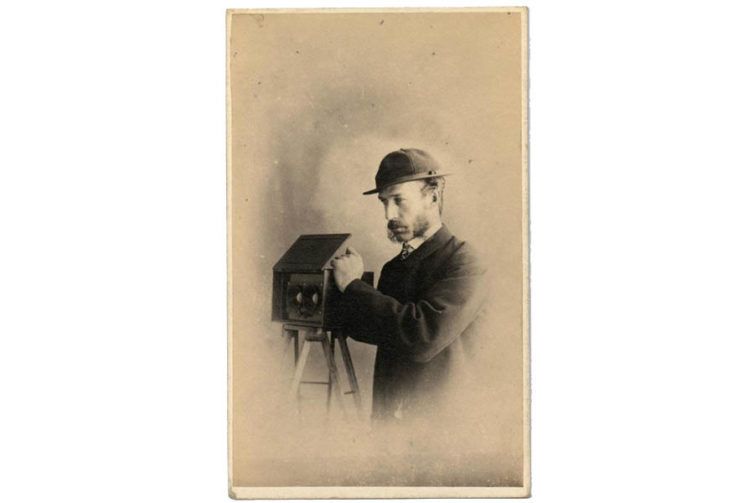Home / Creative Arts & Media / Stereoscopy: An Introduction to Victorian Stereo Photography / Making a stereo image
This article is from the free online
Stereoscopy: An Introduction to Victorian Stereo Photography


Reach your personal and professional goals
Unlock access to hundreds of expert online courses and degrees from top universities and educators to gain accredited qualifications and professional CV-building certificates.
Join over 18 million learners to launch, switch or build upon your career, all at your own pace, across a wide range of topic areas.


 Image: Stereocard depicting Physic Street in Canton, China, possibly by Pierre Joseph Rossier of Negretti & Zambra Photographers, London, possibly 1858 – 1859. IL.2003.44.6.17.122 © Howarth-Loomes Collection at National Museums Scotland
Image: Stereocard depicting Physic Street in Canton, China, possibly by Pierre Joseph Rossier of Negretti & Zambra Photographers, London, possibly 1858 – 1859. IL.2003.44.6.17.122 © Howarth-Loomes Collection at National Museums Scotland
 Stereo daguerreotype, depicting two small girls reading, unsigned, by an unknown photographer, 1850s. IL.2003.44.2.227 © Howarth-Loomes Collection at National Museums Scotland
Stereo daguerreotype, depicting two small girls reading, unsigned, by an unknown photographer, 1850s. IL.2003.44.2.227 © Howarth-Loomes Collection at National Museums Scotland
 Image above: Stereo ambrotype, glass, depicting two unidentified women, one seated and one standing, the latter holding a plant on a plinth, by Charles F. Ravis, Bristol, 1857 – 1859/ IL.2003.44.1.162 © Howarth-Loomes Collection at National Museums Scotland
Image above: Stereo ambrotype, glass, depicting two unidentified women, one seated and one standing, the latter holding a plant on a plinth, by Charles F. Ravis, Bristol, 1857 – 1859/ IL.2003.44.1.162 © Howarth-Loomes Collection at National Museums Scotland
 Stereoscopic wet-plate camera outfit, single lens, by T. Ottewill and Co., Islington, London, c. 1857. T.1981.20. Image © National Museums Scotland.
Stereoscopic wet-plate camera outfit, single lens, by T. Ottewill and Co., Islington, London, c. 1857. T.1981.20. Image © National Museums Scotland.
 Stereoscopic camera in wood, no. 495, by J.H. Dallmeyer, London, c. 1862. T.1967.176 A. Image © National Museums Scotland.
Stereoscopic camera in wood, no. 495, by J.H. Dallmeyer, London, c. 1862. T.1967.176 A. Image © National Museums Scotland.
 Stereoscopic field camera, with leather bellows, pair of lacquered brass bound lenses, and three mahogany double darkslides, in canvas case, by Lancaster and Son, 1870s. IL.2003.44.10.112. Image © Howarth-Loomes Collection at National Museums Scotland.
Stereoscopic field camera, with leather bellows, pair of lacquered brass bound lenses, and three mahogany double darkslides, in canvas case, by Lancaster and Son, 1870s. IL.2003.44.10.112. Image © Howarth-Loomes Collection at National Museums Scotland.






